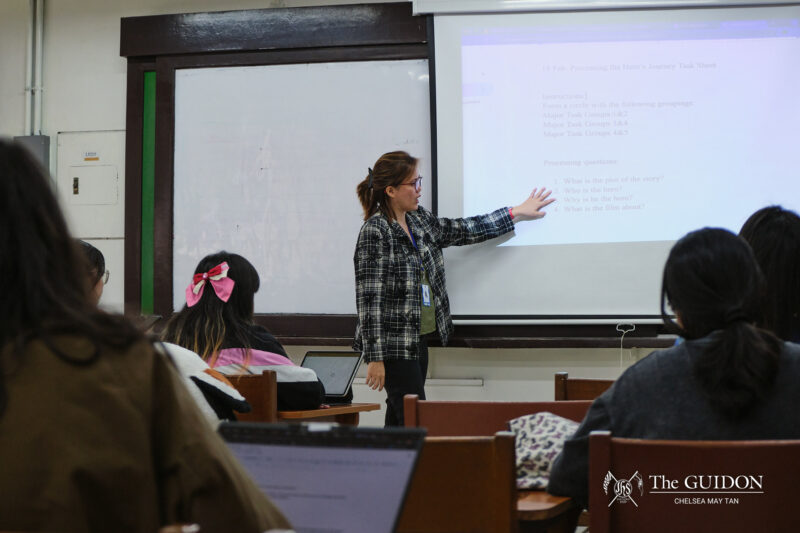Nearly three years ago, a baby was born with human immunodeficiency virus (HIV). Normally, it would have lived through its short life dependent on retroviral drugs—that is, if the baby were fortunate enough to be born to affluent parents.
In July 2010, however, a team of doctors decided to try a daring regimen of drugs on the baby. Today, the baby still shows very minimal levels of the virus. The Mississippi-born child has been cured of HIV; something truly newsworthy.
American media networks such as CNN, PBS and Discovery Channel pick up on the story, and the three doctors—Hannah Gay, Katherine Luzuriaga and Deborah Persaud—are lauded for their breakthrough. They are honored in the 2013 edition of the Time 100, Time magazine’s annual list of the most influential people in the world.
There are two Filipino names in this year’s Time 100. One of them is President Benigno Aquino III. The other is Dr. Katherine Luzuriaga.
Only after the fanfare over the president has died down has she received significant media attention. Such is the life of a Filipino scientist: Constantly ousted from the spotlight.
Problem
The Filipino scientist’s ousting from the spotlight owes itself to a variety of reasons. One substantial factor is the lack of media attention that Filipino scientists garner.
According to Department of Information Systems and Computer Science (Discs) Chair Proceso Fernandez, PhD, the amount of coverage a finding receives may depend on the nature of the breakthrough.
“Usually, mainstream media would cater to something which will entice the viewers or audience. So I guess if [the finding is] not earth-shaking, they wouldn’t give much attention to it.”
“It’s not as exciting for the media as other bits of news are, like achievements in sports or entertainment,” Biology Department instructor Ronald Cruz adds.
To blame media in itself, though, would be a heavy-handed accusation. The way most Filipinos process media content also details why science does not receive ample reportage.
Cruz says that scientific news is naturally constrained to smaller, more exclusive circles. “It’s mostly the scientific community who’s excited about such news, but people outside it are not. So we can understand why the media wouldn’t really cover it.”
For Paolo Agloro, an instructor at Discs, the issue also holds its fair share of class implications.
“Tignan mo, third world country tayo, e. So ang nangyari, makahanap ka ng cure sa cancer, yung tipong taong-bayan, wala naman siyang pakialam doon e. Goal niya kumain. (Look, we’re a third world country. What happens is that when someone finds a cure for cancer, the ordinary person doesn’t care. His goal is to be able to eat.)”
“The first thing you need to do is survive,” explains Agloro, referring to Abraham Maslow’s Hierarchy of Needs. “I think as a third world country, we’re still sort of struggling with that part.”
Analysis
The disparity of the recognition scientists receive abroad and locally seems to be more nuanced, involving more than how media is produced or consumed.
For Cruz, one particular reason seems not to limit itself to the scientific field but to other disciplines as well. “Filipinos seem to need foreign attention or foreign recognition before recognizing that the person who has received that particular accolade or recognition is worth honoring.”
Cruz also points out, however, that most of those who do receive recognition work in foreign countries or with foreign collaborators.
This assertion supports another point brought up by Gian Dapul (BS Chem ’13), former president of the Ateneo Chemistry Society. Dapul says that the fact that resources are more abundant out of the country, coupled with the general lack of governmental support given, equals a culture that fails to see the value of science.
“You have all of these people doing all of these great things, but [if] you don’t support them, you lose that people capital,” says Dapul. “You lose the ability to hold on to them and say, ‘Hey, why don’t you do something for the country?’ That’s why a lot of them go abroad, study abroad, because it’s really better there in terms of the resources.”
Cruz also details a common conflict that occurs in the scientific community: The tug-of-war between basic research and applied research, both of which constantly vie for funding and support.
“In the Philippines and probably a lot of other countries, there’s more premium given to applied research, meaning the type of research that can produce products and applications that you can actually use and sell,” he says.
Because of this, basic research, which sometimes does not find immediate application and is therefore not as easy to market, is often forced to the sidelines.
Both Cruz and Dapul mentioned marine biologist Dr. Lourdes Cruz as an example of a Filipino scientist they believe did not receive sufficient recognition. Her research focused on the development of analgesic drugs (painkillers) and antidotes from cone snail toxins.
Though her research granted her the prestigious L’Oreal-Unesco For Women in Science Award in 2010, it did not garner much attention.
Cruz also mentioned another esteemed scientist, Dr. Nina Ingle (BS Bio ’85), an educator and conservation biologist based in Davao. Ingle, according to Cruz, is a perfect example of a locally-educated, locally-based Filipino scientist more recognized abroad than locally; Ingle was awarded the prestigious Parker/Gentry Award for Conservation by the Chicago’s Field Museum in 2012 but is still relatively unrecognized by the public or by institutions here in the Philippines.
Hypothesis
For students from the School of Science and Engineering who plan on taking on careers purely devoted to their respective disciplines, do they share the same fear of not being prioritized?
Though Nicko Caluya (BS CS ’13) says that science isn’t given priority, he holds out on hope for his generation.
“One of the positive criticisms of this generation is we are the app makers,” Caluya says, alluding to the more recently released Time magazine issue about millennials. According to him, the emergence of innovation centers and application development startups have cultivated an environment for science-based careers to flourish.
Hannah Tee, a sophomore management information systems major, fears that people outside the scientific community, though they don’t actively downplay science, hold a limited view of what scientists are.
“It’s more of [that] they think that, since this person’s a scientist, that’s all they’re good for: They know facts, they know figures. I think it’s more of people from other practices don’t really realize that scientists can actually help them in their own field of study.”
Dapul, who now works for Teach for the Philippines, worries about how to integrate his discipline into other lines of work. His main concern centers on how to engage the youth.
“The best way to strike at it is to strike at the young people,” he asserts. “If I have a career in science, I’d want to get people to say, ‘Hey that’s cool, I want to find out more.’”
What Dapul believes hinders this ideal mode of communication, however, is the common notion of science as a distant or esoteric subject, rendering it inaccessible to the general public.
“There’s that illusion of science as something like, ‘Oh wow, science is something that’s big and I can’t understand it,’” he says.
Repetition of results
When professors were asked what concrete benefit can be reaped from additional recognition given to the sciences, the resounding reply came in one word: Funding.
“The more popular or more well-known the scientist is, the more capable he or she is of attracting funders,” Cruz asserts. These funders in turn provide more money for the laboratories of these scientists, thereby helping their projects come to fruition.
Fernandez, however, does not place a premium on additional attention. He explains that, as a scientist, access to resources would be more preferable to recognition. “So if we come up with a project that we feel will help the country, then it should be something that can be funded by the government, which I feel is something happening right now,” he continues.
However, the scientific community is taking matters of funding into its own hands with startup projects. Agloro believes that Filipino startups can help not only fund projects but engage bigger audiences. He takes part in the Spark Project, a Filipino crowdfunding website for local ventures.
Agloro and the rest of Spark Project have also been utilizing social media to bolster their Kickstarter-esque enterprise. “Kumbaga yun ang pinaka-marketing naman. Tapos ang daming sumusunod. (That’s our main way of marketing, and a lot of people follow.)”
Solution
Both Dapul and Caluya stress the importance of scientific research in directly improving the average Filipino’s quality of life.
Dapul asserts that more attention to the sciences can pave the way for more advanced research, which will inevitably address immediate concerns, despite the common notion of science being an inaccessible discipline for many.
“If you are able to do these kinds of things, they trickle down,” Dapul states in a mix of English and Filipino. “The effects of these advancements, they become applied. They become things that will really help people.”
“The possibilities are endless,” says Caluya. “Let’s say, that’s why there’s a Silicon Valley in California. Because Bill Gates is there, because Steve Jobs is there too. They really put up their academies, they put up their scientific community or technological community there because of their stalwarts,” he says in a mix of English and Filipino.
The scientific community of the Philippines, though it may not be receiving the amount of recognition it truly deserves, seems to be on a steady climb towards further advancement and progress. However, the same cannot be said of the common Filipino’s cultural attitude towards science: It is an attitude in dire need of rethinking and uprooting.







